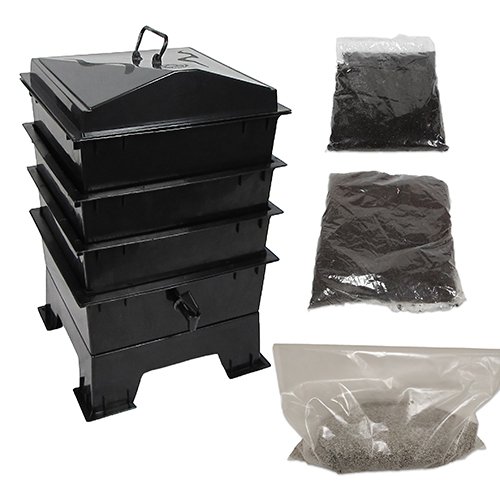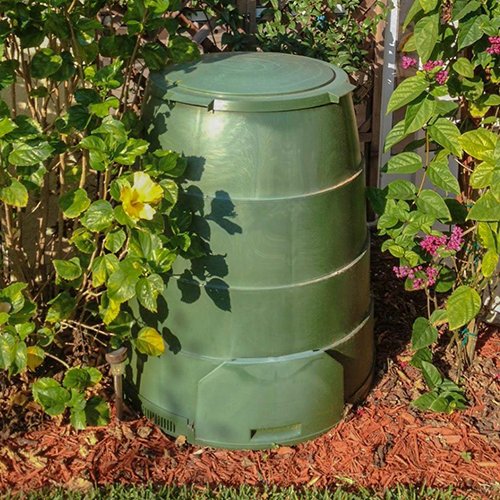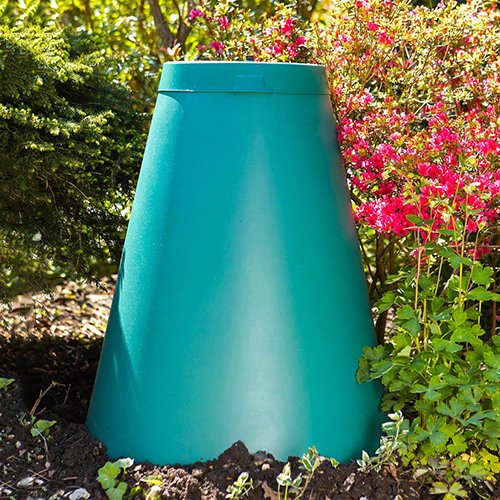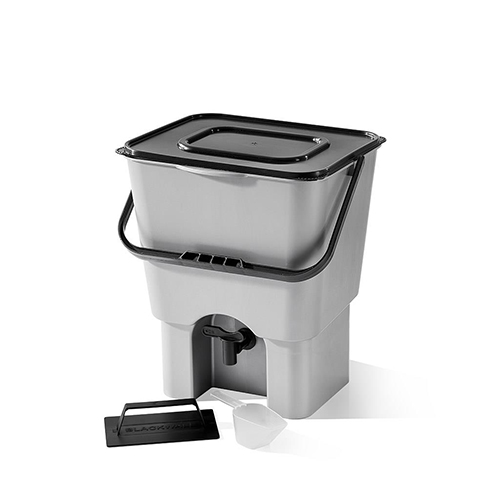Home composting trial
Composting is a great way to transform your kitchen and garden waste into a valuable and nutrient-rich food for a garden or pot plants, and reduce how much you throw away. There are lots of different types of composters available and we are currently testing them out.
1000 lucky people were picked at random to receive a composter in February 2020.
Composters being trialled
Each composter comes with a kitchen caddy to make it even easier for you to compost your kitchen waste.
Space required
- Width: 40cm, Height: Empty 56cm/Full 80cm.
- Small and versatile. Can be placed outside preferably under cover or in a garage. Great if you do not have a garden.
Items taken
- Yes please: Most food items and some garden waste such as: vegetables and peelings, teabags, pasta, rice, pizza, cardboard, paper.
- No thanks: Bones, garlic, eggs, dairy, oils, spicy foods, grass cuttings.
Output
A type of soil is created that can be used as a top dressing for pots and flowerbeds. Liquid is also passed through the bins, which makes excellent plant feed - just dilute with 10 parts water.

Space required
- Width: 90cm height: 95cm.
- Place on a flat area of grass or earth. Needs to be kept in full shade or in sheltered area. Needs to be aerated using a 'turning stick' (included)
Items taken
- Yes please: All food items and garden waste such as vegetables, fruit, daily products, bones, teabags, egg shells, soup, bread, wilted flowers, grass clippings, weeds and twigs etc.
- No thanks: Pet faeces
Output
Traditional compost to use on flowerbeds, around trees and as mulch

Space required
- Width: 38cm, height: 70cm.
- Works with solar power so needs to be dug into the garden in a sunny, well-drained spot.
Items taken
- Yes please: Can take almost all food waste including cooked and uncooked meat, fish, bones, dairy, vegetables, fruit etc.
- No thanks: garden waste, paper and cardboard, cooking oils/fats, hard shells from nuts and seafood such as oysters and crabs.
Output
Almost none! The green cone only produces water, carbon dioxide and a small amount of residue which only needs to be removed every few years.

Space required
- 2 X 18L bins are provided. Width: 32cm, height: 37cm. One bin can be kept inside to fill whilst the other is outside 'pickling' your food waste!
Items taken
- Yes please: Fresh fruit and vegetables, cooked and uncooked meats, fish, cheese, eggs, bread, teabags, wilted flowers and tissues.
- No thanks: Liquids (such as milk, water, fruit juice), paper, bones, mouldy or rotten foods.
Output
A material is produced which can be added to a traditional composter, dug into the ground or diluted and used as plant feed. The liquid can be poured down the drain to prevent algae build up and odours.

What happens next
Everyone who gets a free composter will need to complete two simple questionnaires, one three months after you receive it and another six months after you receive it.
Each composter comes with an information leaflet full of advice and guidance on how to use it and get the best results.
Our compost crew vloggers will also be on hand to share the composting experience with you, so be sure to follow them on Kirklees Council YouTube .
After 6 months, the trial will be over and the composter and caddy will be yours to keep and continue using.